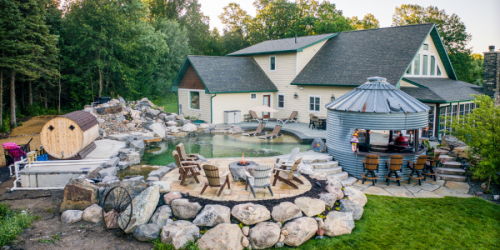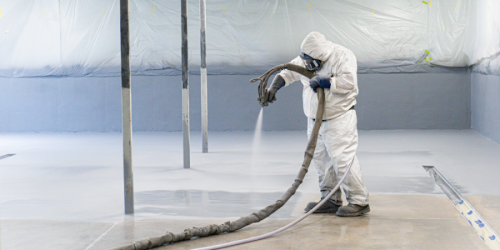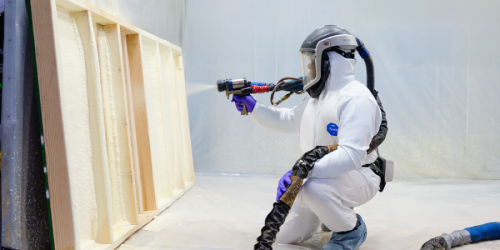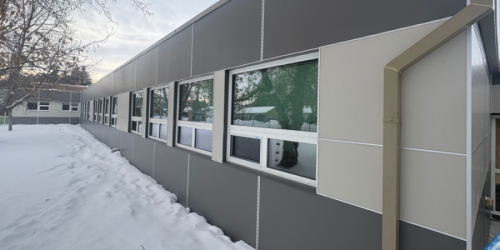Q&A Forums
wood drying kilns Post New Topic | Post Reply
| Author | Comments |
|---|---|
|
Circle-D
Posted: Feb 15, 2009 05:51 PM
|
wood drying kilns
Mason,Is there any special precautions or prerequuisites that should be noted for foam applications to wood drying kilns. These will be run to a constant temperature of 180-190 degrees and subject to very high humidity due to the wood drying process. |
|
mason
Posted: Feb 15, 2009 07:05 PM
|
Sprayfoam will start to char at around 200 degrees F. So you should be OK at 180 to 190. But, be sure the kiln's temperatures do not peak at higher temperatures. I have seen this happen with hot tanks that are supposed to be maintained at 160 to 180. To be safe, place temperature sensors set at 200 degrees on the surface between the kiln and the foam. If you are spraying the outside of the kiln and it is a permeable substrate (such as concrete) do not use a vapor retarder coating on the foam. If it is being sprayed on the inside, apply a vapor retarder coating over the foam. It would also need to have higher temperature resistance. Ask your foam supplier for their recommendations and perform a hygrothermal modeling (such as a WUFI simulation) to determine how much foam to use As for the application itself, prime the surface and make sure it is sufficiently dry before installing the foam. |
|
Circle-D
Posted: Feb 16, 2009 08:22 AM
|
Do you have some suggestions as to the type of primer to use? Does using foam in this high heat,high humidity environment make it more prone to shrinking? |
|
mason
Posted: Feb 17, 2009 11:13 AM
|
Foam will expand in hot humid environments and shrink in colder ones. Ask your foam supplier for their primer recommendation. |
|
Circle-D
Posted: Apr 07, 2009 10:51 PM
|
Mason: Is there such a thing as high temeperture foam, something designed for constant subjection to 180-190 degree heat? Most mfgs. that I've dealt with say 180 is about their limit. One suggested 3lb roofing foam would be better suited for this environment. Thoughts on this? Anyone? Can you explain the dimensional stability number on a spec sheet? I see numbers from all over the board. One mfg. states a volume change of -2.65 and a weight change of -1.15. Another company just list one number a +4% max and yet another company is at 6%. Is that a plus or a minus.Another says % of volume change is <15% actual 8.8 Some are a 158 degrees for a week @95% RH others are at 98%RH and yet another was 28 days at 158 degrees @95%RH. Is there no industry standard here? If they all supposedly test to ASTM D 2126 how come it isn't for equal time or equal RH? |
|
mason
Posted: Apr 09, 2009 08:11 AM
|
Some foams are more resistant to higher temperatures than others. But, somewhere around 200 degrees F, the foam will start to discolor, then char. Your manufacturer will tend to err to the conservative, because many times you install the foam, it tends to make the substrate higher in temperature than before the foam was installed. So if you have 180 to begin with it can easily exceed 200 degrees after the foam is installed. We saw this situation when insulating hot tanks in refineries. After installing a few inches of foam, the substrate temperature would rise 20 to 40 degrees higher than before the installation. We started using temperature sensitive discs on the metal that changed color when it exceeded the manufacturer's recommended temperature. There have been some specialized formulas that can take much higher temperatures but they have been pour in place systems and very expensive. The problem is that fillers had to be added to the foam that would not get through the screens fo the spray gun but it could go through specially designed pour guns. (I don't know if anyone makes these type of systems anymore. The company I knew that made this type of foam was based out of Albuquerque.(sp?) All American Enterprises Inc. |
|
Circle-D
Posted: Apr 09, 2009 10:38 AM
|
Ok Thanks, What about my question about the 3lb. foams, are they any better in this environment, and the dimensional stability questions? |
|
mason
Posted: Apr 09, 2009 02:34 PM
|
A 3 lb density foam would have better dimensional stability in hot humid environments, but would not be more resistant against degradation from hot surfaces. |





























